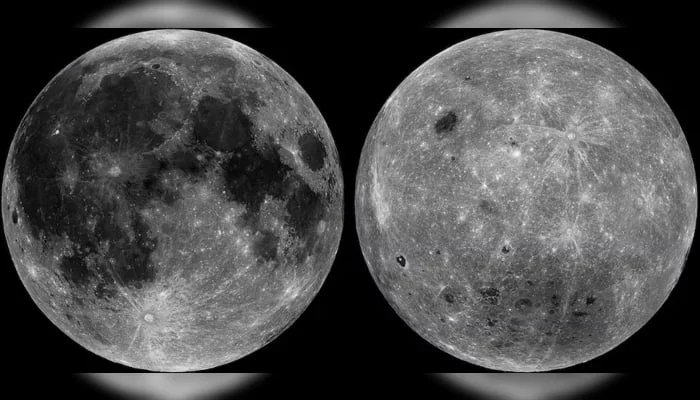
Moon’s Two Faces: NASA’s GRAIL Mission Uncovers Hidden Asymmetry and Volcanic Past
For decades, scientists have observed a stark contrast between the near and far sides of the Moon. But what lies beneath the surface? A groundbreaking gravity study using data from NASA's Gravity Recovery and Interior Laboratory (GRAIL) mission has revealed that the Moon's interior is just as asymmetrical as its face, offering compelling evidence for the role of intense volcanism in shaping the lunar landscape.
The NASA findings, published in the journal Nature, suggest that the Moon's nearside, perpetually facing Earth, is warmer and more geologically active than its farside. This difference, the research team says, is likely due to a history of intense volcanism on the nearside that occurred billions of years ago.

Ryan Park, supervisor of the Solar System Dynamics Group at NASA's Jet Propulsion Laboratory and lead author of the study, stated, "Our study shows that the Moon's interior is not uniform: the side facing Earth - the nearside - is warmer and more geologically active deep down than the farside." The nearside is characterized by vast plains known as mare, formed from ancient solidified lava, while the farside is more rugged with fewer such plains. The team's analysis revealed that the nearside mantle flexes slightly more under Earth's gravitational pull, a phenomenon called tidal deformation, further indicating differences in the two sides of the lunar interior.
Researchers estimate that the nearside mantle is, on average, 180-360 degrees Fahrenheit (100-200 degrees Celsius) hotter than the farside. This thermal discrepancy could be sustained by the radioactive decay of elements like thorium and titanium concentrated on the nearside. Alex Berne, a Caltech computational planetary scientist and study co-author, emphasized the match between the mantle asymmetry and the surface geology, suggesting that the ancient volcanic activity is influencing the present-day structure of the Moon.
GRAIL's Ebb and Flow spacecraft, which orbited the Moon from December 2011 to December 2012, collected the data analyzed over several years by the research team. "Our study delivers the most detailed and accurate gravitational map of the Moon to date," Park stated, highlighting its importance for developing lunar Positioning, Navigation, and Timing (PNT) systems for future exploration missions.
This enhanced understanding of the Moon's gravity field is essential for creating a precise lunar reference frame and time system, enabling safer and more reliable navigation for spacecraft and surface operations. Furthermore, the same gravity data approach could also be applied to understand other celestial bodies, such as Enceladus and Ganymede, in hopes of discovering potential habitability beyond our planet.
These findings not only shed light on the Moon's past but also pave the way for future lunar exploration, contributing to a deeper understanding of our closest cosmic neighbor.
What other secrets does the Moon hold, and how will this new knowledge impact future lunar missions? Share your thoughts and predictions in the comments below!